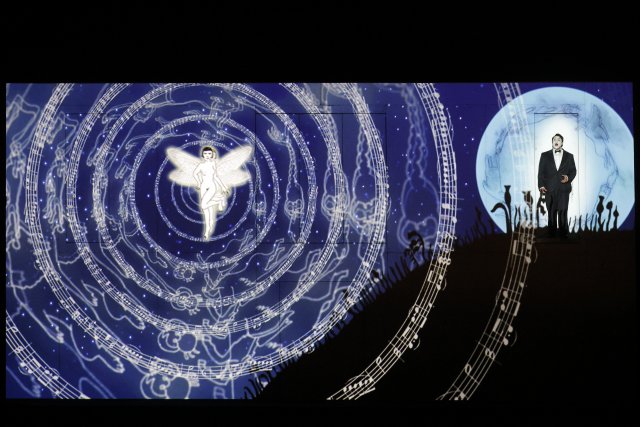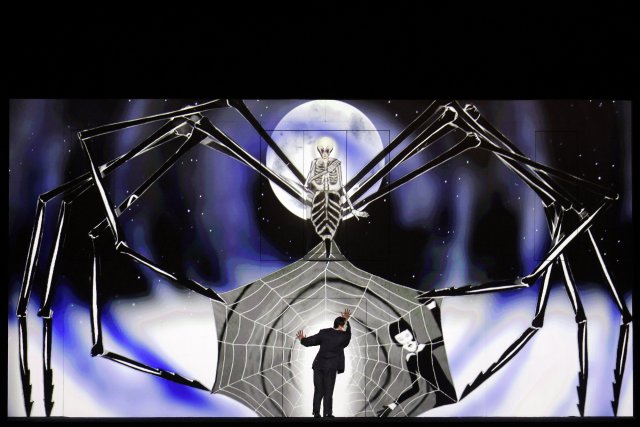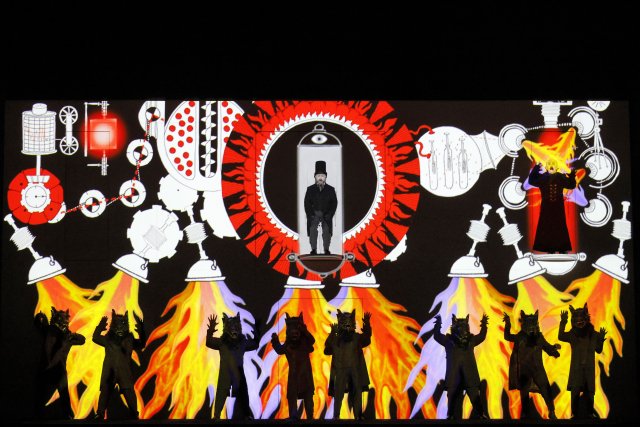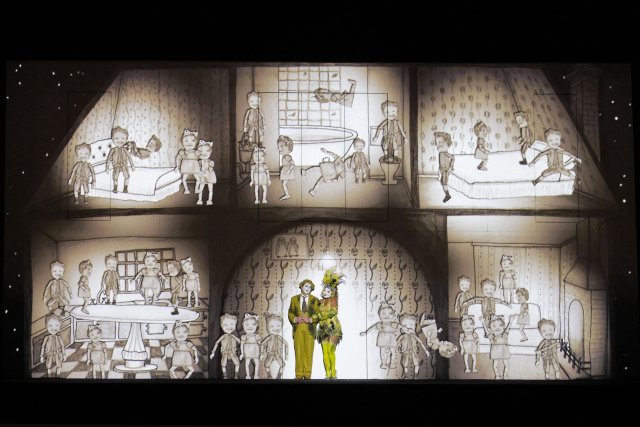The Magic Flute at San Francisco Opera
A Fairy Tale About Love and Aspiration
By: Victor Cordell - May 31, 2024
Opera holds a special place among performing arts. It is exceedingly expensive to produce at its highest levels, and the repertoire of operas that constitute acceptable production risk is limited. Thus, a select number of popular war horses are revived again and again, among them, Mozart’s “The Magic Flute” (“Die Zauberflöte”). In considering both their loyal patrons and newcomers to the form, a challenge for producing companies is whether to repeat traditional renderings of the works or to offer novel interpretations by changing the time frame, venues, or language of the works, or even abbreviating them.
While most successful operas are well-grounded period pieces, “The Magic Flute” is a timeless, placeless, mystical, and fanciful fairy tale, all of which make it conducive to a wide array of interpretations with vivid, innovative staging and costumery. San Francisco Opera offers a production by Komische Oper Berlin that breaks the mold with a visually stunning and riveting realization. Although the music is Mozart (enough said) with ample highlights, it’s hard to imagine an opera production that is more about the visuals than this. It is highly recommended for its incomparable visual artistry, but there are points of concern and discussion.
The conceit is to contextualize the story in the silent film era. The device is a screen that fills the stage. Strikingly garbed live characters sometimes gambol across the stage in front of the screen, often in sharp spotlights, but mostly they swivel from doors on the screen like statues appearing from cuckoo clocks on the quarter hour.
A phantasmagoria of animation festoons the screen throughout. While the still images in this review give an idea of some of the powerful look, they are a mere fraction of the dynamic eye candy on offer. Sight gags appear on and off the screen. The visuals are so enticing, constantly drawing the viewer’s eyes around the screen, competing with the supertitles, that a valid question is whether they actually distract the patron from the storyline or the music. A sampling of two operagoers says somewhat, but clearly, this is an individual thing.
In a final clever adaptation, spoken dialog, which is frequent in this singspiel, is replaced with bold intertitles on the screen (see first image in review). Mozart fantasias for piano are inserted into the score to accompany the screens, so that music is continuous throughout the performance. I can’t verify this, but it seems that the laughter from this graphic device was greater than from the spoken sections in a traditional production. And for sure, the groans by the audience from the intertitle suggesting that women not step outside their designated sphere were pronounced.
The narrative of the opera challenges on its own, but is complicated further if one tries to impute Masonic values into the script, as many feel that Mozart intended. It centers on brave and earnest Tamino who falls in love with a picture of Pamina, daughter of the evil Queen of the Night. He will release Pamina from abduction by Monostatos, a slave to Sarastro, the latter of whom the queen falsely accuses of being evil. Tamino and Pamina will succeed in trials to ordain them into the priesthood and allow them to marry. Playing Tamino’s sidekick is the weak-willed Papageno who only wants a loving wife, and despite his failures in courage, his marriage is granted.
Along the way is musical pleasantry with highlights such as the Queen of the Night’s aria, Papageno’s recurring theme, and Sarastro’s “O Isis und Osiris.” Yet, despite the opera’s popularity and the fact that these splendid accents occur in Act 2, it drags. Perhaps the sheer length of the opera works against it, or the lack of clarity in the libretto.
Opening night performance included pluses and minuses. The Eun Sun Kim led orchestra sounded majestic and accurate, and the chorus boomed with vitality. Compared with typical offerings from the company, the principals didn’t fare as well overall. One exception was baritone Lauri Vasar as Papageno, who not only sang the role well but his Buster Keaton-like miming revealed real acting chops. Amitai Pati as Tamino has certainly established himself as a rising young tenor, but he lacked adequate power this evening. Sarastro is a basso profundo role, and Kwangchul Youn did not project the bottom of the range sufficiently. The female leads, Christina Gansch as a Louise Brooks-like Pamina and Anna Siminska as the Queen of the Night, satisfied, but an absence of bravas from the audience after their signature arias suggests that they weren’t memorable.
This “The Magic Flute” excites like few other productions and should be seen for its creativity and visual magic. Just considering the unique coordination of all of the activities that go on inspires awe. But is this the future of opera? No. It may inspire other non-traditional productions that promote interest, especially among younger audiences, but tradition will continue to dominate.
“The Magic Flute,” composed by Wolfgang Amadeus Mozart with libretto by Emanuel Schikaneder is produced by San Francisco Opera in a production from Komische Oper Berlin, and plays at War Memorial Opera House, 301 Van Ness Ave., San Francisco, CA through June 30, 2024.







